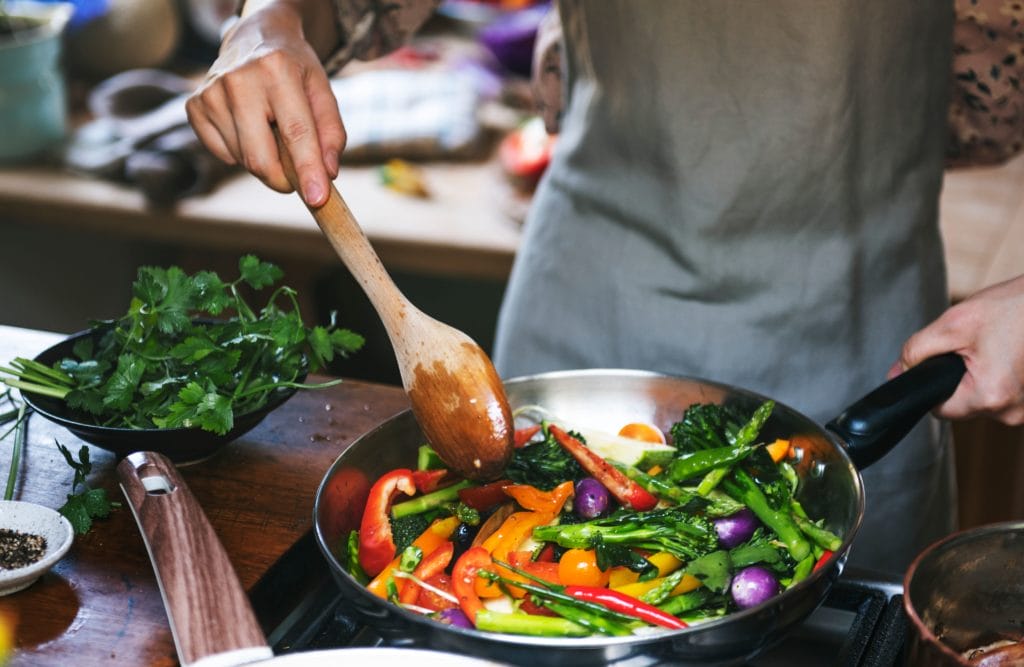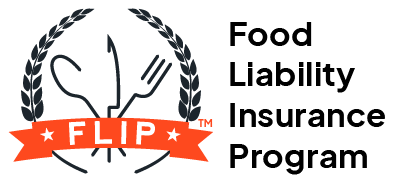The demand for personal chefs is on the rise—the market size for this industry is predicted to increase by $21.7 billion by 2029.
While lifestyles are becoming increasingly busy, many people find themselves unable to devote significant time to preparing and cooking meals. That’s where personal chefs come in.
If you’re interested in starting your own personal chef business, look no further. We’ve broken down how to start a personal chef business from home into seven steps so you know exactly what you need to bring your culinary dream to life.
1. Understand What It Means to Be a Personal Chef
Personal or private chefs prepare and/or serve food to clients based on their preferences and budget. This could mean preparing meals inside your clients’ kitchens or you may prepare meals in your own kitchen or a commercial kitchen and deliver them to clients instead (more on that later).
If you’re interested in this field, it’s safe to assume you probably love to cook, which is important considering you’ll be doing a lot of that as a personal chef.
However, you won’t just work with food in this industry—you’ll be working with people, too. Personal chefs work very closely with their clients to develop menus, meal plans, and coordinate schedules.
Keep in mind that if you’re preparing and cooking meals in your clients’ kitchens, you’ll likely be interacting with other family members, which can be distracting or stressful.
You’ll also be developing meals around a wide variety of palates, and that includes picky eaters.
But if you like to work with people and get a lot of enjoyment out of making others happy, then there’s a good chance you’ll find being a personal chef a rewarding career.
2. Know the Challenges of Starting a Personal Chef Business
While nobody likes to think about the difficult parts of entering this field, knowing what obstacles you might encounter will help you prepare for and possibly mitigate the negative effects.
Here are a few challenges you might encounter as you break into the personal chef world.
Finding and Retaining Clients
If you don’t have any professional experience in this industry, it can be very difficult to find clients who want to work with you because you don’t have any testimonials or word-of-mouth recommendations.
If this is the case for you, start out with a personal chef side hustle first before making it your full-time job.
Look for independent contractor jobs on sites like Indeed. These gigs will help you build a network of potential clients and test market demand while maintaining a steady income from other sources.
Balancing Creativity With Client Preferences
Cooking is a way of self-expression for many people in the same way that painting or writing is for others. For that reason, it can be hard to find a middle ground between what you as a chef think will taste good and what your clients think.
Beyond simply being a palate issue, this also includes clients who have dietary restrictions (vegetarian, gluten-free, low-carb, etc.) that are important to their physical health or their ethical standards.
Know that you may have to compromise or defer to your clients’ tastes more often than not and learn not to take it personally—after all, your job is to provide them with the meals they’d like to cook for themselves but don’t have the time for.
Time Management and Scheduling
As you know, cooking is time-consuming, which is why you must manage your time effectively whether you’re in a client’s kitchen or your own.
When planning meals, you should be thinking about how to maximize efficiency with your oven and/or stovetop usage.
On top of that, you should note when you can prepare ingredients while one dish is cooking, all while making sure nothing burns. It’s a handful!
You’ll also be working around your clients’ schedules. This can be a challenge if you have more than one client and both want you to be able to cook dinner for them on Mondays. Make sure to keep an updated calendar—in your phone, planner, etc.) so you know what you can and can’t commit to.

3. Obtain Necessary Licenses and Permits
The requirements for personal chef businesses will differ depending on where you live or plan to do business.
Educating yourself on the laws in your area that apply to your business is extremely important—you don’t want to suffer a fine (or worse, have to shut down your business) because you weren’t following regulations.
While you may not need all of these depending on where you live, here are some licenses and permits that you should look into when starting your business.
Food Safety Certificate
Obtained through an in-person class or an online course like ServSafe, this certificate shows that you know how to properly prepare and handle food in a way that minimizes the risk of cross-contamination and foodborne illnesses.
DBA (Doing Business As)
Business License
Catering License
General Liability Insurance
Many states require you to have personal chef insurance prior to performing your services. This can protect you should a client claim that your food made them ill or you damaged something in their home.

4. Determine Whether You'll Need to Rent a Commercial Kitchen
While many personal chefs will do all of their meal prep and cooking directly in their clients’ homes, others may prepare the food in their own kitchen or a commercial kitchen before packaging and delivering it to a client.
It may be convenient and easy for some chefs to use their home kitchens to prepare meals, but many states have specific regulations that prohibit you from cooking food in your home and selling it to clients. Be sure to look into your state’s cottage food laws before you start doing business from your home kitchen.
If you rent a commercial kitchen, also known as a ghost kitchen, you’ll have access to industrial kitchen equipment without having to purchase any of it. They can greatly reduce the overhead costs of outfitting your own kitchen with new gear for your business.
Before you jump into renting one, be sure to read up on the requirements for commercial kitchens to make sure that you’re renting a space for your business that’s up to code and will be a good fit for you.
Many personal chefs choose not to cook from home or a commercial kitchen and to cook solely in their clients’ homes because they don’t have to acquire additional permits like a catering license if they do all their cooking on-site.
Make an educated decision by reading up on laws in your state or county and do what makes the most sense for your business.
5. Practice Planning and Cooking a Menu
Before you ever get your first client, practice creating and cooking menus that cater to a variety of dietary needs and culinary palates.
Having a lot of experience cooking for yourself and loved ones at home is very different from cooking for others at a professional level, so getting some practice with this before you actually land clients is super helpful.
Start by looking at sample personal chef menus and practice with those. Gather all the ingredients and note the cost and time you spent shopping for them.
Cook each of the meals, keeping track of how much time it took you to make each one. Don’t forget to log how much time it took you to clean up afterward, including any time spent washing dishes!
Practicing is a great way to try out new recipes and see what holds up in the fridge and what doesn’t.
To get a good idea of how it’ll feel to cook food in a client’s kitchen, see if one of your friends or loved ones will let you cook in their kitchen for a day (maybe in exchange for whatever delicious dishes you’re testing out).
With time, you’ll get faster and more efficient, and before you know it you’ll have a whole host of sample menus of your own.

6. Develop Your Marketing Strategy
You don’t have to be a marketing genius to promote your business. Here are some marketing tools and tactics to start with:
- Build and publish a website listing your services
- Create social media profiles and engage with current and potential customers
- Use targeted direct advertising like social ads and postcard mailers
- Encourage word of mouth from friends, loved ones, and happy customers
There are many ways to promote your business and the way you do so may change over time. What’s important is that you have a plan for how you want to market your business and monitor your results.
7. Create a Business Plan
50% of small businesses fail by their fifth year and one of the major reasons behind this troubling statistic is a lack of planning.
Having a business plan is like having a road map for how to run (and grow) your business—it can help keep you on the road to success and prevent you from veering off course.
There’s no one correct way to make one, but these are the most common sections you’ll find in a solid business plan:
- Executive summary, including your business name
- Company description
- Market analysis
- Marketing strategy
- Loans and financing
- Operation costs and financial projections
- Certificate of Insurance (COI): Learn more about the risks of running a personal chef business and how being insured can help you.
Be sure to download your free personal chef business plan template to learn more about what to include in each section!
Get Started as a Personal Chef Today

By Alex Hastings
Alex is a Marketing Copywriter at Food Liability Insurance Program (FLIP). In her free time, she enjoys reading, birding, traveling, and finding any excuse to get brunch.

